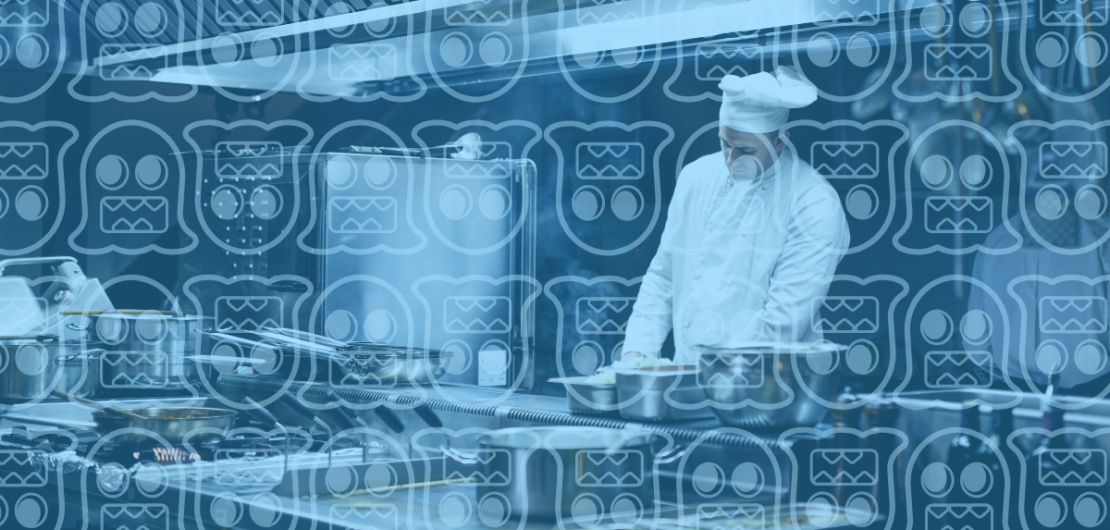The impact of delivery-only virtual kitchens
It’s not quite fall, and the Halloween decorations have already hit the shelves at Target. Come October 31st, there will be ghouls and goblins going door to door looking to get their candy fix. I’m always a little worried that I don’t have enough candy, but there is an easy solution, right? I just buy extra of my favorite candy and if I don’t give it all away to trick-or-treaters I get the benefit of indulging from time to time.
As we prepare for princesses, firemen, witches, and cowboys, traditional restaurants are facing a different kind of scary, hungry creature; “Ghost Kitchens.” Restaurants are already wrestling with how to make a profit with razor-thin margins and how to keep customers coming through the doors. Now they must contend with a new “ghostly” trend that I’m not sure they are prepared to handle.
What is a Ghost Kitchen?
A ghost kitchen, also known as a virtual kitchen or delivery-only restaurant, is a foodservice establishment that offers take-out only. These are mainly being used by third-party delivery services to bypass delivery from traditional restaurants and increase their own profits. Ghost Kitchens don’t have a storefront for customers to dine in or pick up their own orders.
Who is behind these Ghost Kitchens?
Although there are others, the most notable players in the virtual kitchen game are delivery services like Grubhub, Uber Eats, and Deliveroo. These companies use the valuable data they have collected while delivering for traditional restaurants to determine the kind of kitchens they want to mimic. Retail giant Amazon recently invested in Deliveroo. Renowned VC Michael Moritz of Sequoia Capital wrote an article int the Financial Times entitled “The cloud kitchen brews a storm for local restaurants.” In the article he warns that Amazon’s recent investment in the company “might just foreshadow the day when the company, once just known as the world’s largest bookseller, also becomes the world’s largest restaurant company.” This isn’t great news for restaurant owners, he adds, writing, “For now the investment looks like a simple endorsement of Deliveroo. But proprietors of small, independent restaurants should tighten their apron strings. Amazon is now one step away from becoming a multi-brand restaurant company — and that could mean doomsday for many dining haunts.”
How are ghost kitchens impacting traditional restaurants?
Perhaps for some there may be benefits, but it looks like these delivery-only options are putting the hurt on traditional restaurants. In the recent New York Times article “Rise of The Virtual Restaurant” you can read about Paul Geffner, who has run Escape From New York Pizza, a small restaurant chain in the Bay Area, for three decades. “Two of his five pizzerias, which together had generated annual profits of $50,000 to $100,000, lost as much as $40,000 a year and In May, he closed two of the Bay Area chain’s locations. Later that month, one was replaced with a kitchen that mostly does delivery.”
These virtual kitchens “may also undermine the connection between diner and chef. ‘A chef can occasionally walk out of the dining room and observe a diner enjoying his or her food,’ said Shawn Quaid, a chef who oversaw a ghost kitchen in Chicago. Delivery-only facilities ‘take away the emotional connection and the creative redemption.’”
What can traditional restaurants do to compete?
Build your brand: Emphasize what makes your restaurant unique.Take advantage of social media and make sure your marketing highlights your name and logo.
Know your audience: Who are your regular customers? What do they value? Customer data should form the bedrock of your marketing strategy, allowing you to personalize outreach and develop a loyal customer base.
Encourage customer loyalty: Loyalty programs serve two functions: to incentivize new clients to stick around after purchasing your food, and to ensure that existing loyal diners still feel as if they are valued by your company.
Take control of your marketing: You can’t rely on third party delivery apps to do the marketing for you. Guess what? They don’t have your best interest at heart. They would happily direct your potential customers to your competition if they already have a driver in the area. Only you truly care about you.
You don’t go into the restaurant business if you are easily frightened. But no matter how tough you are, you can’t ignore the creeping-crawling reach of third party delivery apps into the restaurant industry; especially their ghostly, dark kitchens.
So who you gonna call? Ghostbusters…….Probably not. But you can call Forefront. We’d be happy to tell you about how having your own branded mobile app can help you survive and thrive.


